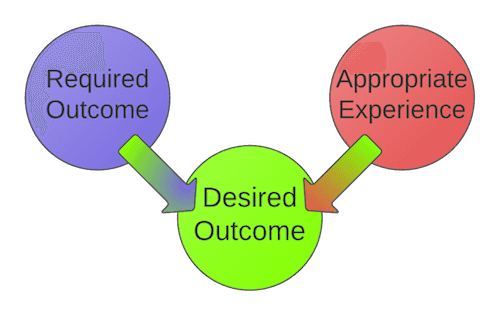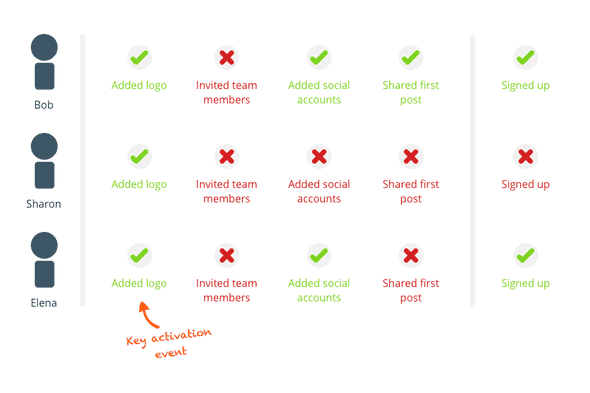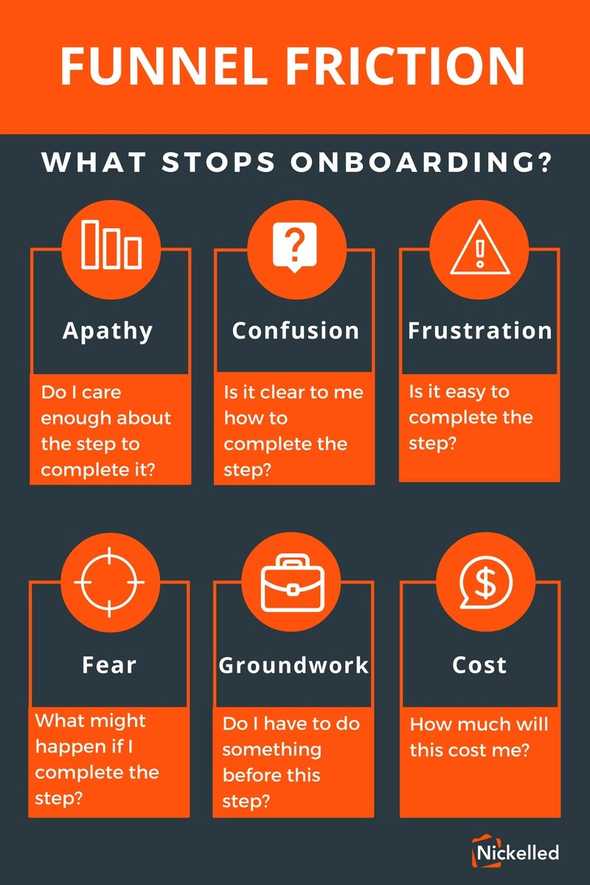Better Customer Onboarding from Nickelled
Take a free trial of Nickelled customer onboarding software, or read our 2021 guide below.
Find out why clients love Nickelled's award-winning client onboarding solution.
Trusted by the best
Customer Onboarding Software, 2021 Edition
######Chapter 1
The Client Onboarding Guide from Nickelled
Savvy software-as-a-service (SaaS) businesses know that customer onboarding is the most critical point in the sales lifecycle.
For online businesses offering a free trial, new customers being onboarded are worth significantly more than a lead in the presale phase — these customers have made a commitment to the business, and as long as they find success, they will convert.
Put simply, client onboarding is to business what takeoff is to an airplane — the high-risk, make or break moment that you HAVE to get right.
So, the right customer onboarding software is everything.
Nickelled works with global SaaS clients to break down the customer onboarding process into five, easy-to-follow steps:
- Identify success
- Map milestones
- Find the friction
- Clear the path
- Measure, iterate and learn
To find out more about our award-winning client onboarding software solution (and to build your website walkthrough in under 60 seconds), click here.
Otherwise, read on to find out about each of those steps…
######Chapter 2
Identifying success
"You can't manage what you can't measure." Peter Drucker
By far the most common problem that we see with client onboarding processes is that success hasn’t actually been defined.
Sure, businesses know what they want their new customers to do — normally, they want them to convert to a paid plan, or add a team member, or perhaps use that new killer feature they just launched.
But nine times out of ten, they’re approaching it wrongly.
Your KYC process should always involve knowledge of what a specific client wants to achieve with your software, and your customer onboarding software should be configured to facilitate that.
The strongest SaaS businesses define success in terms of customer success. They know exactly what their clients want when they sign up to their app and they measure how often and how quickly they deliver it. Recommended further reading on this comes from Lincoln Murphy, in his excellent article Understanding Your Customer’s Desired Outcome.
So the first step in identifying success is asking your customers, honestly and openly, what they’re looking for from your app, and whether you’ve delivered it yet. Better still, take the time to understand what their boss is looking for, what their CFO is looking for and what their customers are looking for.
This is foundational to good customer success practice – it will have benefits that go far beyond your onboarding!
When talking to the customers, this process needs to be described in terms that don’t relate to your service offering. Very rarely will you be offering the exact thing that aligns with your customer’s desired outcome.
Instead, you’ll normally be providing one path for them to get to that destination — and the better you understand the destination, the better you’ll be able to map the route.
Understanding the job to be done is critical to good onboarding, and the best way to understand what customers are looking to achieve is to actually ask them. If you haven't built this into your KYC process yet… Now's your chance!
It’s worthwhile conducting a comprehensive set of interviews with current, happy customers before embarking on the process of improving the onboarding experience - the interviews can be lightly structured, but will likely reveal useful insights into the usage of your product or services. Understanding your current customers' experience in one of the best ways to figure out what your ideal onboarding process should look like.
Your goal in interviewing is to establish the answers to a couple of questions:
- What is the problem the customer is trying to solve?
- What are the options they have for trying to solve it?
- What made them choose your product or service?
Understanding these answers is key to forming and testing your own jobs to be done model which can inform your onboarding experience and set up your customer onboarding software correctly.
######Chapter 3
Mapping milestones
How will you translate your customer’s desired outcomes back into the outcomes you’re looking for?
According to Fraser Deans, head of product at Nickelled, by far the best way is to watch users use your product and record when they reach their moment of success (also known as the "Aha!" moment) by conducting usability testing. You can read the full interview with Fraser here but the key excerpt is below:
In-person usability testing is basically peering over the shoulder of a user whilst they complete a task within your application to see what they do.
It really opens your eyes to what your customers are seeing and doing!
It’s important that you get them to speak their thoughts out loud as they go through the process and you’ll start to really see they pain and literally hear them say “Aha!” when the penny drops.
If you’re unable to conduct in-person usability testing you could do remote usability testing (UserTesting.com is a great service for this — you’ll be sent a video of a person completing the task). Additionally take a look at services like Hotjar that will record real life users interactions for you to view later.
Fraser Deans, Head of Product, Nickelled
The secret to a great SaaS client onboarding experience doesn’t lie in users, or teams, or analytics. It doesn’t lie in the hands of the product team or the marketing team or the customer success team. The secret lies in success — and how fast your business can push its customers there (with or without customer onboarding software).
When you realize that every user has a job to be done, success is relatively easy to define. When jobs theory is applied, any given user should also come with a given task:
“I want to up-sell my customers at scale.” “I want to schedule my team-members automatically.” “I want to provide my customers with the answers to commonly-asked questions before they ask.”
However, the key to designing an onboarding flow is recognising what needs to be completed inside your app before the user can reach their goal. The difficulty is often that a user may complete many actions before they reach success, but only a handful of them will result in a user achieving success.
We call these ‘key activation events.’
Key activation events are normally common across all of the most successful users of a SaaS product. So if your target is to convert more of your signups into high-paying clients who use your products for years, you’ll need to understand exactly what those high-paying clients did in order to become successful. Fortunately, you’re already collecting that information.
One important point to remember about key activation events is that they’re distinct from success, which is what the user’s looking for.
A key activation event, while it may also hold value for the user, isn’t likely to be their end goal or even to be viewed as progress along their path — nobody signs up to an app so that they can add a teammate (a surprisingly common key activation event that we see). In fact, it’s very likely that adding a teammate brings no immediate value to the user at all.
However, in the broader context of the customer onboarding process, it may be one thing that guarantees success. For this reason, key activation events need to be identified, monitored and prompted in a well-thought-out manner.
######Chapter 4
Finding the friction
With your milestones identified, the rest of the process is a lot easier.
From here, the effort is around how to remove anything in your customer onboarding that stops the users reaching their milestones, implementing solutions and measuring the outcomes.
Humans seek seamless experiences — we don’t like obstacles that stand in the way of our goals and our brains are hardwired to seek out the shortest route to success.
Clearly, many things can have an impact on whether or not your users ever reach the high-value milestones (key activation events) you’ve identified. But in our experience, a few reasons tend to pop up again and again when mapping out a customer onboarding process that works.
-
APATHY: Do I care enough to complete the step?
-
CONFUSION: Is it clear how to complete the step?
-
FRUSTRATION: Is it easy to complete the step?
-
FEAR: What might happen if I complete the step?
-
GROUNDWORK: Do I have to do something else before completing?
-
COST: How much will it cost if I complete the step?
If you're wondering how the above issues manifest themselves most commonly, consider the following things:
- Evaluate the forms used in your app and consider the level of friction they present.
- Reduce any elements that break the user’s focus when they try to sign up with a given objective.
- Consider whether the steps in your onboarding flow are all required for new users.
- Check to see how well your app is signposted.
- Implement manual processes when it is clear that they will help move the user to success (and figure out how to automate them later).
######Chapter 5
Clearing the path
User Interface Fixes
Broadly speaking, this refers to tackling problems caused by a poor user interface. Common pitfalls here include pages where the buttons aren’t obvious or don’t work, where text entry fields don’t validate properly or where the design is so bad it’s just impossible to know where to start.
Customer Education
Customer education needn’t take the form of an interactive guide (like Nickelled), or any other generic piece of onboarding software - your business may find success with videos, email series, in-app messaging or even in-person onboarding to ensure the customer knows what they’re supposed to be doing next. Fundamentally, the route to success for new users will depend on how effectively you can fill the knowledge gap between your most successful customers and those who are just getting started.
User Experience Fixes
Here, we’re talking non-design elements that also have a huge impact on the customer onboarding process. The most common type of poor user experience we see at the beginning of the customer journey tends to be excessive fields in forms, poor CAPTCHAs or email validation requirements which are totally unnecessary.
Although we’re specialists in building website tutorials, we recommend that businesses take a holistic approach when clearing the path. So while website tutorials may serve to better educate users about the potential of a product, they should never be used to cover up a poor user interface, for example.
######Chapter 6
Measuring results
Congratulations. If you’ve got this far and followed our advice, you’ve got a killer customer onboarding process you can be proud of. In other words, you’ve laid a great foundation. Now, it’s time to start building on success by measuring and refining until you’re onboarding every user perfectly.
We wrote a full blog post on measuring customer onboarding results here — including some handy hints on what to measure and why.
The key questions you have to be able to answer, however, are:
- What percentage of our users extract value from my product?
- How long does it take them to get there?
Only once you understand these can your business begin to accurately measure the success of your new client onboarding plan. In general, tools such as Google Analytics or Amplitude can help you to map out user journeys and understand where value extraction really occurs.
In our experience, companies tend to measure onboarding initiatives on three axes — actions, events and users.
- An action = a user utilizing a specific part of the app
- An event = a user-intent driven point (a waypoint on the way to customer success)
- A user = a person using the app
Of course, an event can also be an action and both events and actions are always tied to users. But thinking of these three dimensions allow us to put in place a customer onboarding flow framework for answering key questions, which may look something like:
- User signs up
- User creates a company
- User creates their first guide
- User invites a colleague
- User’s guide gets viewed by a third-party
We'll close this guide with a quote to remember:
“When someone signs up for a product, they’re expressing a sense of hope — a hope that their life will be improved with that particular product in it.”
This quote comes from Samuel Hulick, an authority on user onboarding thanks to his work at UserOnboard.com. And it’s one of the clearest expressions we’ve seen of the importance of getting this stuff right — rise above the finicky forms and the gamification and the tech-driven metrics and we are all, essentially, trying to help our users fulfill their hopes of a better life.
Our job as CEOs, founders, product people and marketing people, is to guide them through the journey to their goals as quickly and as safely as possible, to give the best customer experience we can. Design your customer onboarding process with that in mind, and your customers should be happy.
######Chapter 7
Further Reading
Looking to learn more about better customer onboarding? You may also be interested in:
- The Nickelled Blog
- How startups can build a world-class customer support operation in seven days
- Chartmogul's Superb Guide to Customer SaaS Onboarding
How can Nickelled help?
Customer onboarding is a learning process, and we’d love to learn with you. We make simple guides to onboard and convert every user, with zero website changes required.
To create a Nickelled guide today, with no code installation or software downloads click here.
At the end of the process, simply create a no-obligation account and we’ll be in touch to talk about how you can revolutionize client onboarding in your company.



